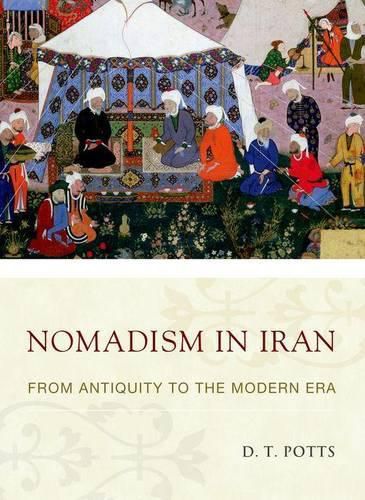Nomadism in Iran: From Antiquity to the Modern Era
D. T. Potts (Professor of Anient Near Eastern Archaeology, Professor of Anient Near Eastern Archaeology, Institute for the Study of the Ancient World, New York University)

Nomadism in Iran: From Antiquity to the Modern Era
D. T. Potts (Professor of Anient Near Eastern Archaeology, Professor of Anient Near Eastern Archaeology, Institute for the Study of the Ancient World, New York University)
The classic images of Iranian nomads in circulation today and in years past suggest that Western awareness of nomadism is a phenomenon of considerable antiquity. Though nomadism has certainly been a key feature of Iranian history, it has not been in the way most modern archaeologists have envisaged it. Nomadism in Iran recasts our understanding of this timeless tradition. Far from constituting a natural adaptation on the Iranian Plateau, nomadism is a comparatively late introduction, which can only be understood within the context of certain political circumstances. Since the early Holocene, most, if not all, agricultural communities in Iran had kept herds of sheep and goat, but the communities themselves were sedentary: only a few of their members were required to move with the herds seasonally. Though the arrival of Iranian speaking groups, attested in written sources beginning in the time of Herodutus, began to change the demography of the plateau, it wasn’t until later in the eleventh century that an influx of Turkic speaking Oghuz nomadic groups– true nomads of the steppe–began the modification of the demography of the Iranian Plateau that accelerated with the Mongol conquest. The massive, unprecedented violence of this invasion effected the widespread distribution of largely Turkic-speaking nomadic groups across Iran. Thus, what has been interpreted in the past as an enduring pattern of nomadic land use is, by archaeological standards, very recent. Iran’s demographic profile since the eleventh century AD, and more particularly in the nineteenth and twentieth centuries, has been used by some scholars as a proxy for ancient social organization. Nomadism in Iran argues that this modernist perspective distorts the historical reality of the land. Assembling a wealth of material in several languages and disciplines, Nomadism in Iran will be invaluable to archaeologists, anthropologists, and historians of the Middle East and Central Asia.
This item is not currently in-stock. It can be ordered online and is expected to ship in approx 2 weeks
Our stock data is updated periodically, and availability may change throughout the day for in-demand items. Please call the relevant shop for the most current stock information. Prices are subject to change without notice.
Sign in or become a Readings Member to add this title to a wishlist.


